The world is bustling, all for profit; the world is bustling, all for profit to go! Hello everyone, I am your friend Lao Cui, focusing on digital currency market analysis, striving to convey the most valuable market information to the vast number of coin friends. I welcome everyone's attention and likes, and refuse any market smoke screens!
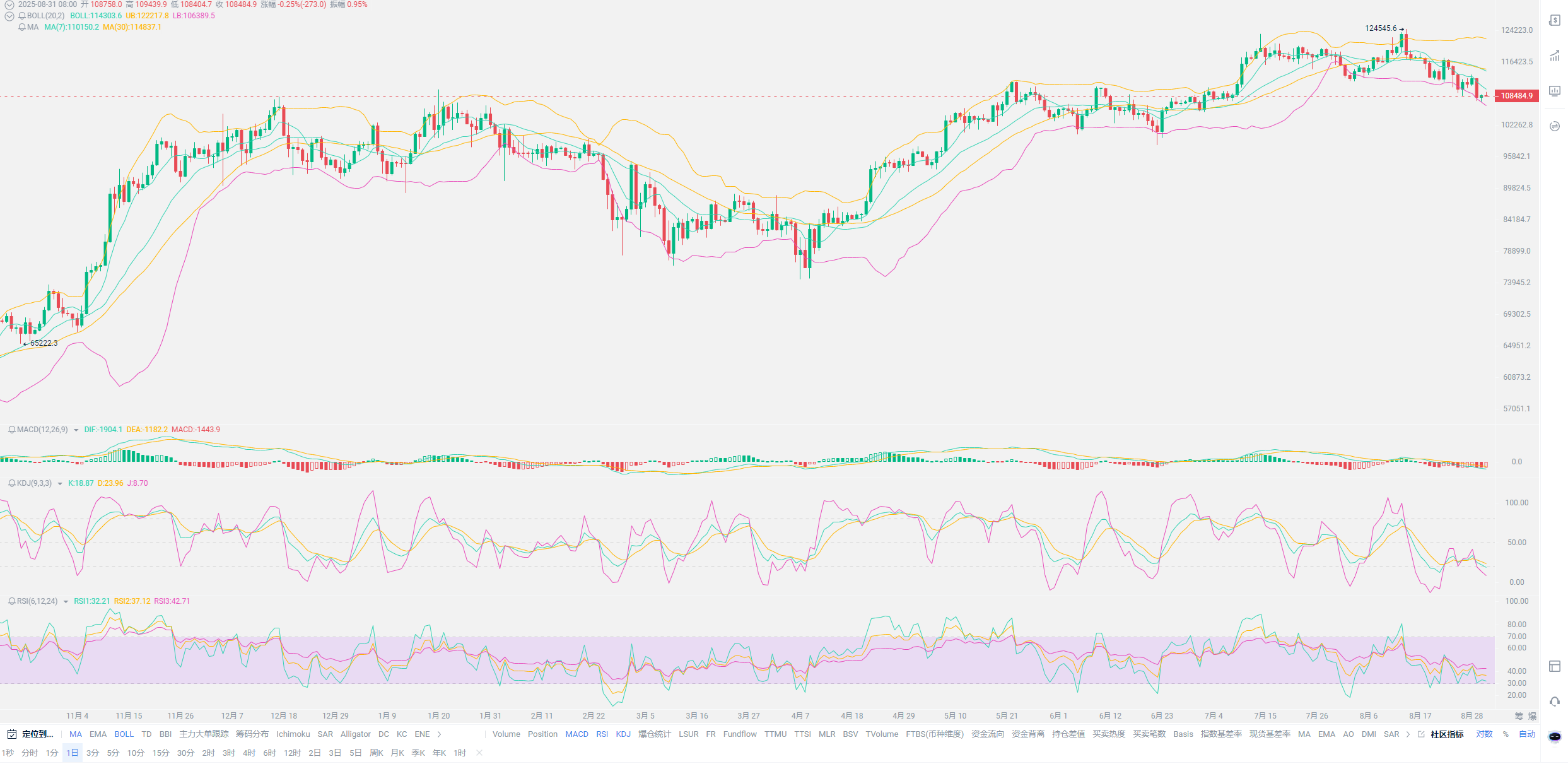
Today's article will revolve around the contracts of mainstream coins. Most of the users I discuss with are contract users, and it's quite strange that spot users are less vocal; perhaps everyone is still in a profitable state, or maybe spot users are better at keeping their composure, which is the biggest good news. Throughout June, we will be navigating through a correction market, a trend I have mentioned multiple times. How to profit during a correction? This is the main theme of the article. Everyone's first reaction might be to short. Shorting is definitely the optimal solution, but how to allocate positions? How to control risk? These two points are crucial in determining whether you can profit. A phrase I often say is that all investments must first consider risk. As long as you can accept this type of risk, you can invest. Even in a Ponzi scheme, as long as you can accept the possibility of losing everything when you invest, you can still invest. You must have a mindset that accepts losses to have a sustainable profit layout in the future, especially in the volatile crypto space, where poor operations are almost akin to gambling!
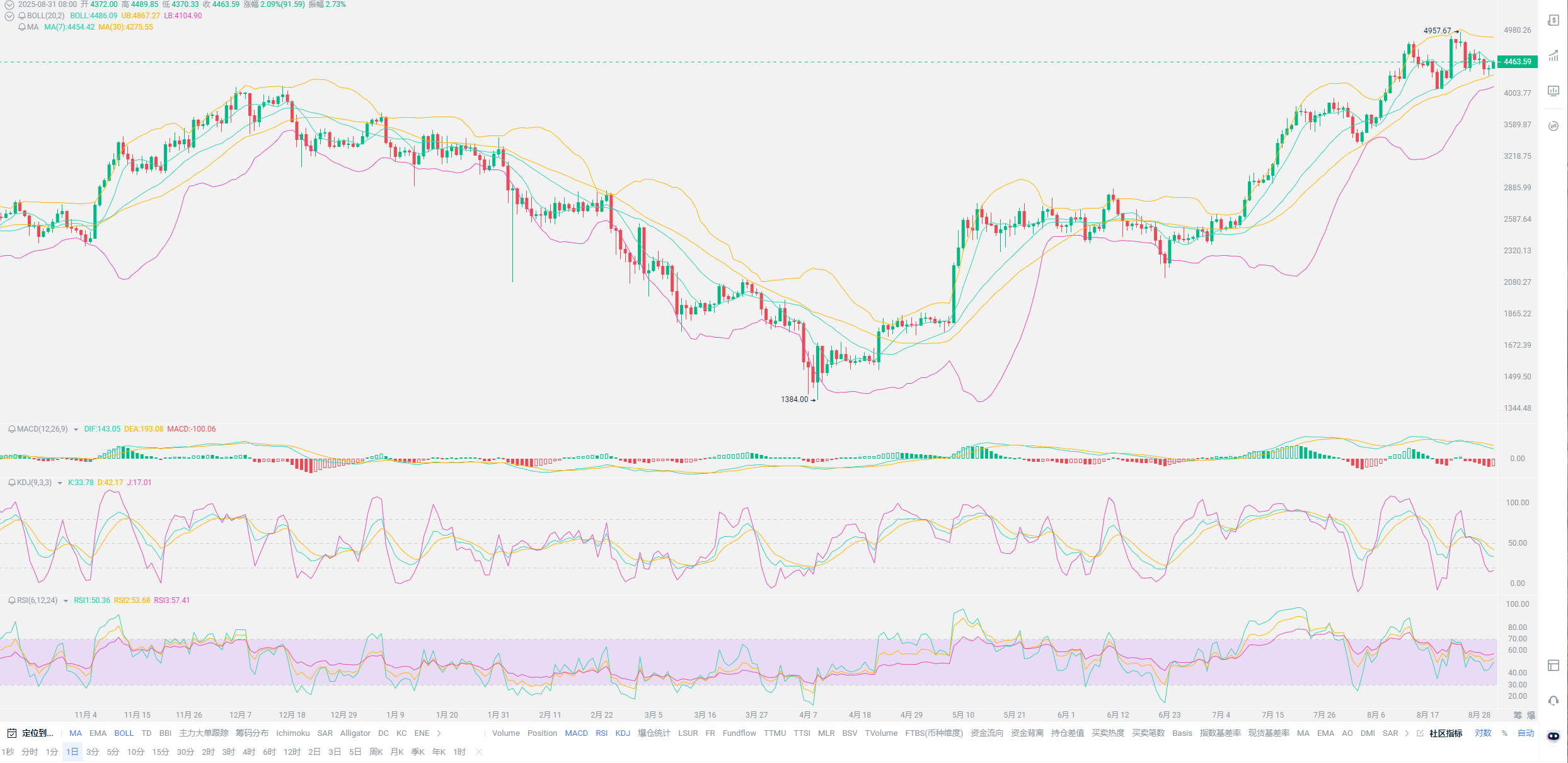
Taking Bitcoin as a reference, let me explain how to layout in response to such market conditions. First, you need to confirm the trend. Before the interest rate cut, it was clear that there was no significant capital to intervene, which is the biggest problem for a market. In the short term, a capital shortage phenomenon will emerge. There is only one path to take: frequently test the bottom space by probing downwards, waiting for the main force to intervene. The response method is to build positions in batches, making the worst-case assumptions. Entering at the current price at the 108,000 position with one-tenth of the position, using 1WU as the basis, the liquidation position would be around 98,000. So where is the replenishment position? The first support in the short term is undoubtedly around 105,000-100,000. Once it falls below 100,000, it would declare the failure of this long position. However, this approach can only be considered a short-term gamble and is not suitable for long-term gains. Going long on contracts, for the short term, the stop-loss and take-profit points cannot be proportional, so wanting to go long at this stage is definitely not the optimal choice.
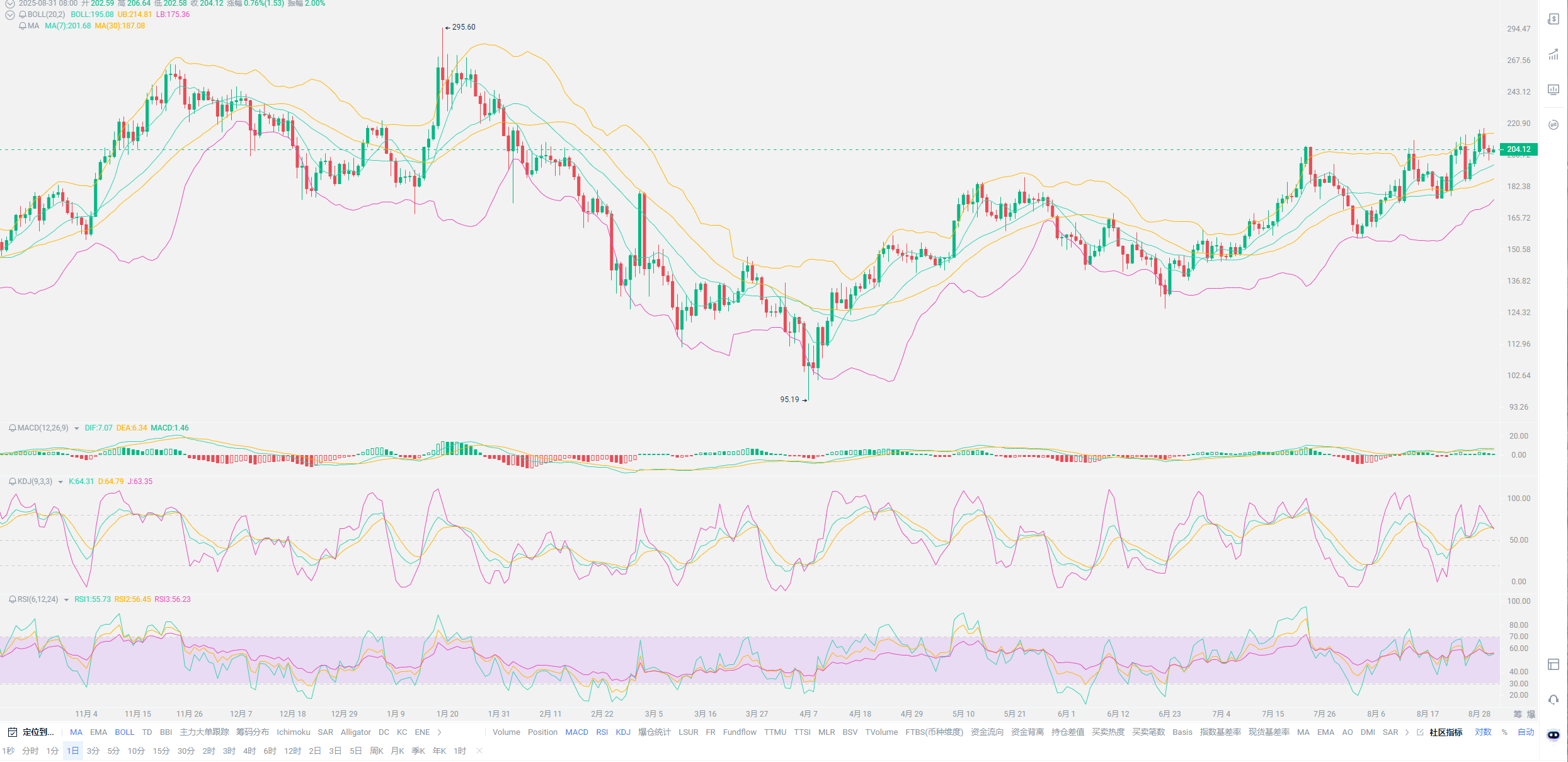
Everyone needs to have a clear formula for controlling data and risk. Mapped to contracts, my conversion method requires that the risk-to-reward ratio should reach at least 50-50. If I invest 10,000 U, then my profit should be around 10,000. When investing, I must acknowledge the existence of risk, meaning that losing this 10,000 would not affect the essence of my life. The essence of money is that it flows into the hands of those who do not need wealth, and for contracts, this leveraged trading has stricter risk control. For example, the current market trend shows that the risk of Bitcoin falling below 100,000 still exists. If I have to accept a loss of 10,000 U in principal, I must see a return of 20,000 or even 30,000. The difference between spot and contracts is just that; because when we invest 10,000 in spot, we cannot lose it all, and we will retain some principal, making the return on spot more considerable.
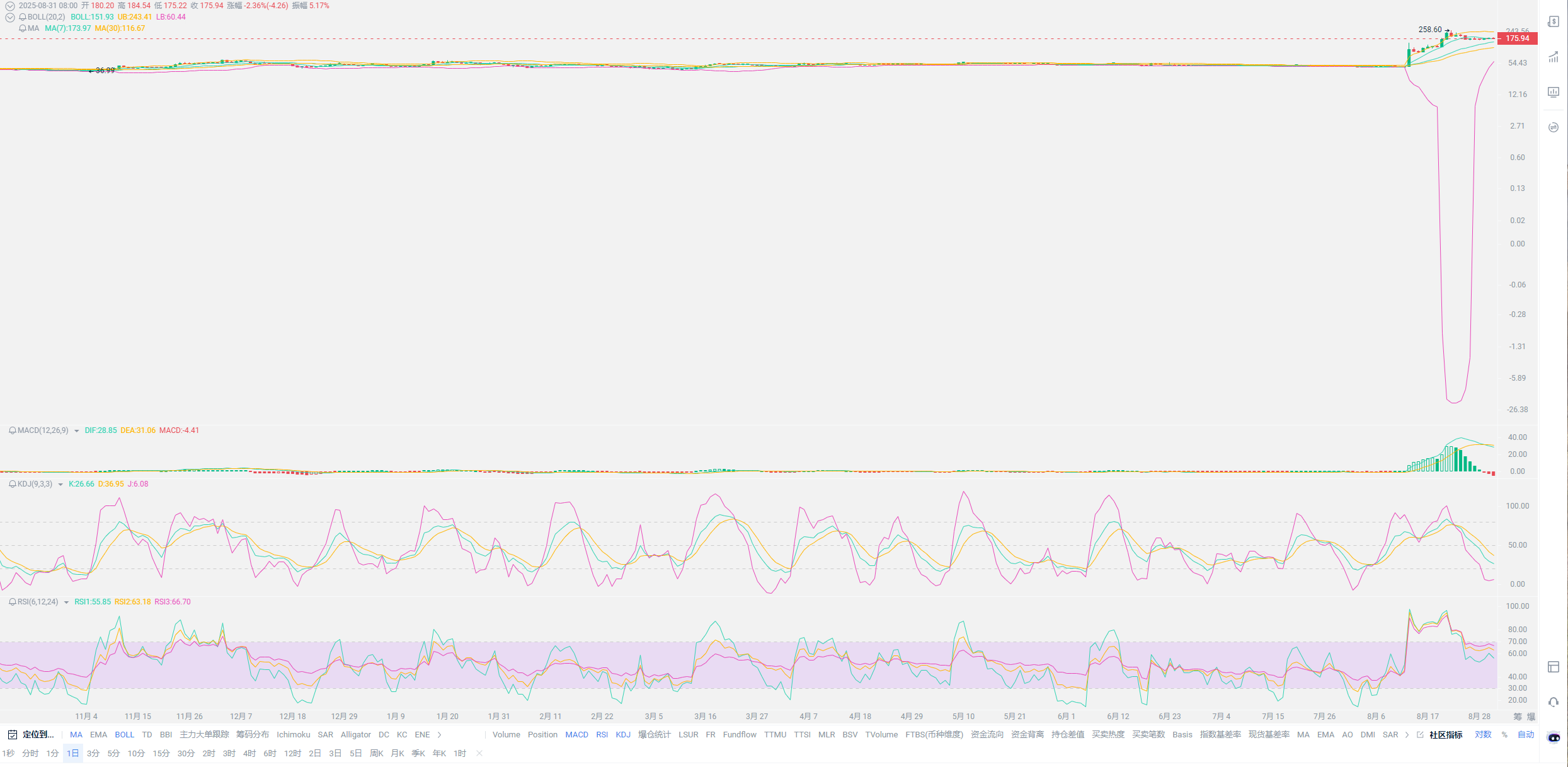
For most people, leverage should not be too high. Normally, a leverage of 5-10 times in the current market is considered standard. Based on this ratio, the principal requirement for Bitcoin with five times leverage is only about 2WU, which can achieve the goal of doubling within the year. As long as the stop-loss position is set below 90,000, the risk of this wave of market will not be too great. However, my trading method usually does not choose to enter at the current price. The control of entry points boils down to two points: the arrival of a bear market and choosing to do T in a bear market, which is my preferred method of entry. The first order is assumed to be a loss, and all subsequent positions are based on the layout of the bear market. The downside is that it consumes a lot of capital and takes a long time, but it is the most stable method. I had already reminded everyone of this method when entering; at that time, many thought I was too aggressive, and most users did not choose to enter. It indeed tests courage, but I have enough confidence due to my understanding of the cryptocurrency market.

You can also review my articles. Last year, I entered Ethereum at 3,400, and the final average price maintained at 2,400. The first order for SOL was around 220, and the final average was pulled to around 160. The maximum loss almost reached half, as this year saw SOL below 100 and Ethereum around 1,400. Livermore once said: "Trading is not about predicting, but about waiting." The word "waiting" is an operation that goes against human nature, and the process is extremely torturous. Fortunately, there was no blame from users during this process, and I thank everyone for their trust. The timing for this method has dissipated; a hero does not speak of past bravery. In the current trend, if I have not entered, the control of the entry timing will definitely not be at the current price. Users who still want to enter can only wait for the next bull market to start. How to judge a bull market? For everyone, as long as there is a three-day breakthrough of more than 10% increase, with a pullback depth of less than 5%, it is highly likely to start.
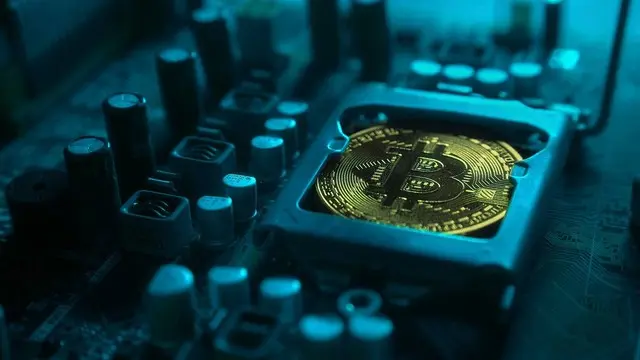
This signal needs to be combined with news aspects. For example, Goldman Sachs' latest prediction indicates that due to job falsification in the U.S., it is very likely that the first interest rate cut will exceed 50 basis points, possibly reaching 100 basis points this year. Once this signal materializes, Bitcoin and Ethereum will definitely see new highs this year. At that time, the start of the bull market will naturally follow. The only risk for everyone is the intentional market manipulation by the big players. You do not need to focus on short-term risks; just remember one thing: within three months after the interest rate cut, there will inevitably be corresponding capital inflow, and the best entry timing is within half a month of the interest rate cut. Witnessing the aforementioned increase, you can layout for this trend. For short-term trends, contract users need to pay attention; as long as you can set the stop-loss position below 90,000, this stage is an excellent entry opportunity for everyone. If the capital volume is insufficient, then wait for the timing I mentioned.

Lao Cui summarizes: This article hopes that everyone can have a correct understanding of the current trend in the crypto space. This round of bull market will not see the events everyone expects. The fundamental support of the cryptocurrency market lies in the trade settlement between countries, whether it is foreign exchange trade settlement or the net inflow of the U.S.; ultimately, how it is utilized requires time to witness. The so-called 200,000 Bitcoin or even 1 million Bitcoin is merely in the bubble stage. What you can do is to grasp this bull market well; it will be difficult for Bitcoin to break through the high range of 130,000-150,000 this year. Frankly speaking, Bitcoin's market value is indeed somewhat too high, while SOL, which has been promoted this year, has shown good performance in the short term, which is also a glimmer of hope after nearly half a year of dormancy. Overall, the bull market is still ongoing, and there are still opportunities for everyone to enter. If you are still unable to grasp the entry points, you can directly ask me, and do not choose the wrong coin; the future survival space for altcoins will only become smaller.

Original creation by WeChat Official Account: Lao Cui Talks About Coins. For assistance, please contact directly.
Lao Cui's message: Investing is like playing chess; a master can see five, seven, or even ten moves ahead, while a novice can only see two or three moves. The master considers the overall situation and strategizes for the big picture, not focusing on individual pieces or territories, aiming for the ultimate victory. The novice, on the other hand, fights for every inch, frequently switching between long and short positions, only competing for short-term gains, resulting in frequent entrapment.
This material is for learning reference only and does not constitute trading advice. Trading based on this is at your own risk!
免责声明:本文章仅代表作者个人观点,不代表本平台的立场和观点。本文章仅供信息分享,不构成对任何人的任何投资建议。用户与作者之间的任何争议,与本平台无关。如网页中刊载的文章或图片涉及侵权,请提供相关的权利证明和身份证明发送邮件到support@aicoin.com,本平台相关工作人员将会进行核查。



